Local dishes:Most restaurant meals start with mezzeh and only after you have eaten these appetizers will you be asked if you want to order a main dish this very sensible as in many cases mezzeh is all one needs exactly what you get as mezzeh varies from place to place but it usually includes the following:
Arabic bread round and flat which is eaten with all the other mezzeh dishes.
Hummus a puree of chick peas (garbanzos) with tahina (sesame seed paste), garlic and lemon juice.
Baba ghanoush a dip made from cooked often smoked egg-plant 9aubergine and tahina.
Foul moudammas boiled fava (brown) beans with garlic lemon juice cumin and lots of olive oil; a traditional Arab breakfast dish.
Fried Kibbe (Kibbe maqliya) deep fried balls made from a meat and bulgar 9cracked) wheat paste, with a spicy meat and onion filling
Sambousek small pastries filled with minced meat sharp white cheese or spinach/herb mixture.
Tabbouleh, a salad of chopped parsley, tomato, onion and fresh mint, with bulgar wheat and lemon juice.
Main dishes:
Mansaf Jordan’s national dish is stewed lamb served on a bed of rice and pine nuts, in a tangy yogurt sauce. Traditionally eaten from a communal dish using the right hand, mansaf is also available in restaurants.
Kebabs cooked over a charcoal fire are another specialty and you will find
shish tawook (boneless chicken)
shish kebab (boneless lamb or beef) and
kofta kebab (spicy minced lamb) in most restaurants.
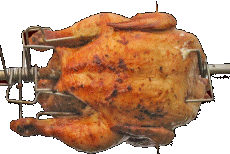 Farooj
Farooj spit roasted chicken is also popular and served with bread and salad.
Fish is relatively rare in Jordan, although specialties like
Sayadieh (Fish and Rice), boiled fish with Lemon sauce, are well worth trying if you find them on the menu.
Stuffed Grape Leaves (vine leaves stuffed with rice, minced meat and spices);
musakhan (chicken in olive oil and onion sauce roasted on Arab bread)
Sweets:Jordanians have a sweet tooth and these pastries also make a great gift to take home.
Baklava is thin layers of phyllo pastry with chopped nuts in sweet honey syrup
Knafe, shredded dough filled with nuts or goat cheese, baked in syrup.
Katayef, a Ramadan treat, are small deep-fried pancakes stuffed with nuts, cheese or kashta.
Maamoul, pastries with nuts and dates, perfumed with rose water.
Mahalabiya, a milk pudding with rose or orange flower water.
Sahlab, a hot milk drink flavored with powdered sahlab root and served with chopped pistachio nuts, cinnamon and rose water.
Take away food:There are plenty of delicious snacks to be found in restaurants and street stalls, Try these:’
Beef Shawarma, also known as a sandwich, is thinly sliced beef or lamb cut from a vertical spit and served in flat pita bread.
Chicken shawarma is good too.
Falafel: are small deep fried balls of a paste made with chick peas, onions, parsley and spices; it is usually served wrapped in pita bread with tahina and salad.
Coffee and tea:Jordanian
Arabic coffee is strong and served in tiny cups it is often flavored with cardamom. Don’t try to drink the last mouthful, as it will be full of coffee grounds shake the cup to indicate that you do not want a refill.
Turkish coffee is also common, and American coffee is available in the cities decaffeinated coffee is offered in the larger hotels coffee is an important symbol of hospitality and it is very common to be offered coffee or tea in small shops, or to be invited to have coffee in someone’s home it is good etiquette to accept. Tea is served in small glasses and is usually very sweet tea with fresh mint makes a refreshing variation.
 Smoking:
Smoking:Smoking is much more common in Jordan than in Europe or the USA, and smoke free accommodation is relatively unusual, except in the larger hotels. Smoking a nargileh, the traditional water pipe or Hubble Bubble is an interesting experience which can be tried in any coffee house and many restaurants. The tobacco flavor is mild and often heavily perfumed.
Alcohol:Alcohol is served in most restaurants and bars in the cities, except during Ramadan (non-Arabs can still get a drink in a hotel). Locally brewed Amstel beer is available as are excellent wines from surrounding countries. Alcohol can also be purchased in supermarkets and some shops. Araq is local liquor similar to Greek ouzo, usually mixed with water and ice.
Nightlife:There are nightclubs, theaters and cinemas in Amman, while some other major towns have cinemas. Often clubs will only admit couples or mixed groups. Many of the four- and five-star hotels have popular clubs and bars.
Shopping:Every town will have a souk (market), and there are also many good craft and jewelery shops. There is a particularly good gold and jewelery market in Amman. Special items include: Hebron glass, mother-of-pearl boxes, pottery, backgammon sets, embroidered tablecloths, jeweled rosaries and worry beads, nativity sets made of olive wood, leather hassocks, old and new brass and copper items, caftans hand-embroidered with silver and gold thread. Jordan is famous for its gold and silver; the center of Amman has a gold souk with over 50 shops. Necklaces with a small golden coffee pot (dalleh) - a national symbol - are popular and widely available.
Shopping hours: Sat-Thurs 0900-1300 and 1500-2030 (closed Friday).
Special Events:The following is a selection of special events in Jordan during 2002. For a complete list consult the Jordan Tourism Office (see address section):
Apr 4-14 Amman International Festival for Independent Theatre.
Apr 12 Amman Dead Sea Ultra Marathon, Amman.
Jul 26-Aug 11 Jerash Festival for Culture and Art (two weeks of Jordanien and international folklore groups, artists and musical performances).
Social Conventions:Handshaking is the customary form of greeting. Jordanians are proud of their Arab culture, and hospitality here is a matter of great importance. Visitors are made to feel very welcome and Jordanians are happy to act as hosts and guides, and keen to inform the tourists about their traditions and culture. Islam always plays an important role in society and it is essential that Muslim beliefs are respected . Arabic coffee will normally be served continuously during social occasions. To signal that no more is wanted, slightly tilt the cup when handing it back, otherwise it will be refilled. A small gift is quite acceptable in return for hospitality. Women are expected to dress modestly and beachwear must only be worn at the beach or poolside.
Photography: It is polite to ask permission to take photographs of people and livestock; in some places photography is forbidden.
Tipping: 10-12 per cent service charge is generally added in hotels and restaurants and extra tips are discretionary. Porters' and drivers' tips are about 8 per cent.
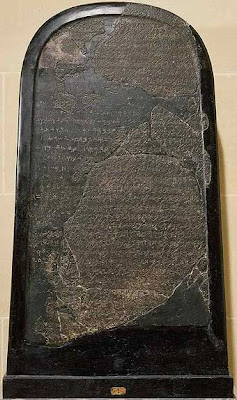
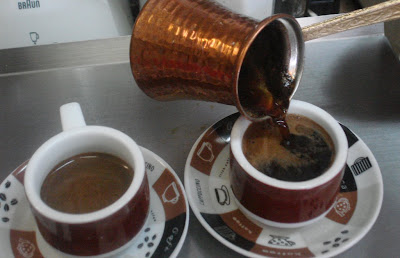
 Falafel are small deep fried balls of a paste made with chick peas, onions, parsley and spices; it is usually served wrapped in pita bread with tahina and salad.
Falafel are small deep fried balls of a paste made with chick peas, onions, parsley and spices; it is usually served wrapped in pita bread with tahina and salad.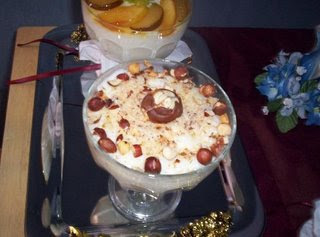 Easy Mahalabiya (Milk pudding) recipe. Mahalabiya, mahalabia, muhalabia or mahallabiyya is a favorite Jordanian desserts dish both in summer and winter, especially liked by children. In the Middle East the rice may be purchased already pulverized. It could also be pulverized at home with a mortar and pestle or in an electric blender.
Easy Mahalabiya (Milk pudding) recipe. Mahalabiya, mahalabia, muhalabia or mahallabiyya is a favorite Jordanian desserts dish both in summer and winter, especially liked by children. In the Middle East the rice may be purchased already pulverized. It could also be pulverized at home with a mortar and pestle or in an electric blender.
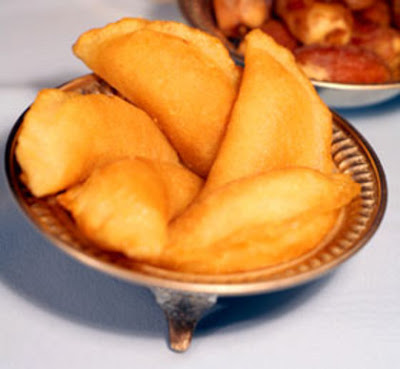

 Ingredients
Ingredients
 Ingredients:
Ingredients: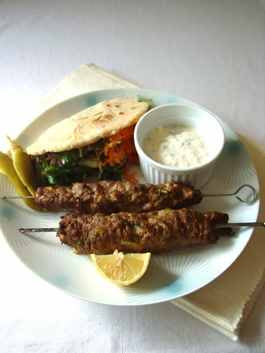 The lamb kofta kebab (spicy minced lamb) is famous dish and you can find it in most Jordanian restaurants.
The lamb kofta kebab (spicy minced lamb) is famous dish and you can find it in most Jordanian restaurants. Here's a shish kebab recipe that couldn't be simpler to make and can be cooked either on the BBQ or under a hot grill.
Here's a shish kebab recipe that couldn't be simpler to make and can be cooked either on the BBQ or under a hot grill. Ingredients:
Ingredients: Ingredients:
Ingredients: The national dish of Jordan is Mansaf: lamb seasoned with aromatic herbs, sometimes lightly spiced, cooked in yogurt, and served with huge quantities of rice. Feasting on Mansaf is taken seriously, and hours are spent in its preparations.
The national dish of Jordan is Mansaf: lamb seasoned with aromatic herbs, sometimes lightly spiced, cooked in yogurt, and served with huge quantities of rice. Feasting on Mansaf is taken seriously, and hours are spent in its preparations.
 Ingredients
Ingredients Ingredients:
Ingredients: Ingredients:
Ingredients: Makes: approx 3 cups
Makes: approx 3 cups Ingredients:
Ingredients:
 Smoking:
Smoking: Below are listed Public Holidays for the January 2009 - December 2010 period.
Below are listed Public Holidays for the January 2009 - December 2010 period. Air
Air International Airport
International Airport Sea
Sea Rail
Rail Road
Road Arabic cuisine delights the gourmet, and feasting is a preoccupation not only of Jordan, but of the Middle East as a whole. In culinary terms, the Middle East enjoys one of the world's most sophisticated and elaborate cuisines, and are rated among the finest foods in the world. Dishes will even satisfy the health conscious because many of them are made with grain, cheese, yogurt, fresh and dried fruits and vegetables. With the use of these grains and vegetables, meat goes a long way and even the simplest ingredients can produce a surprisingly attractive creation. Jordan's cuisine, although unique, is part of this distinctive culinary heritage, which have been savored for well over a thousand years. Below are two Jordanian delicacies:
Arabic cuisine delights the gourmet, and feasting is a preoccupation not only of Jordan, but of the Middle East as a whole. In culinary terms, the Middle East enjoys one of the world's most sophisticated and elaborate cuisines, and are rated among the finest foods in the world. Dishes will even satisfy the health conscious because many of them are made with grain, cheese, yogurt, fresh and dried fruits and vegetables. With the use of these grains and vegetables, meat goes a long way and even the simplest ingredients can produce a surprisingly attractive creation. Jordan's cuisine, although unique, is part of this distinctive culinary heritage, which have been savored for well over a thousand years. Below are two Jordanian delicacies: The national dish of Jordan is Mansaf: lamb seasoned with aromatic herbs, sometimes lightly spiced, cooked in yoghurt, and served with huge quantities of rice. Feasting on Mansaf is taken seriously, and hours are spent in its preparations.
The national dish of Jordan is Mansaf: lamb seasoned with aromatic herbs, sometimes lightly spiced, cooked in yoghurt, and served with huge quantities of rice. Feasting on Mansaf is taken seriously, and hours are spent in its preparations. Stuffed Baby Lamb is a popular dish in Jordan, which people enjoy as a big and heavy meal. It consists of roasted lamb, stuffed with rice, chopped onions, nuts and raisins.
Stuffed Baby Lamb is a popular dish in Jordan, which people enjoy as a big and heavy meal. It consists of roasted lamb, stuffed with rice, chopped onions, nuts and raisins.